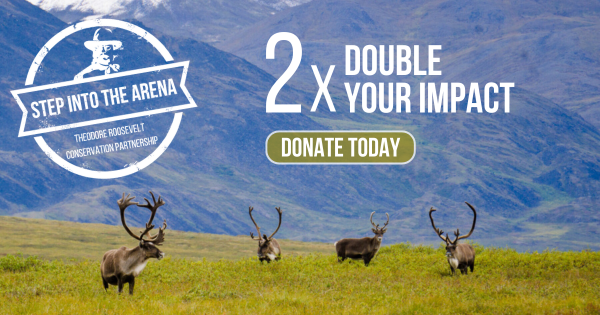TRCP’s Idaho ambassador discusses his first bull elk, his love of the Snake River, and how his family cabin in Massachusetts started it all
Launching this fall, TRCP’s ambassador program calls on sportsmen-conservationists to help advance our goals by offering local volunteer support. These #PublicLandsProud hometown heroes are not willing to sit idly by as the wild places we love are lost. They know there’s more to our sports than just hunting, fishing, and going home.
Meet Bob Breckenridge, our volunteer ambassador out of Idaho. He’s a veteran of conservation work who won’t let retirement stop him from giving something back to hunting and fishing, and we’re glad to have him on our side. Here’s what he loves about chasing Idaho elk, exploring the Tetons, and searching for giant, elusive browns on the Snake River.
TRCP: What’s your earliest memory in the outdoors and how do you spend your time outside these days?
Breckenridge: Just off the Appalachian Trail in Massachusetts, my family cabin was built in the 1850s and had no running anything. Our family spent two weeks each summer in the woods, playing in our creek and having great times around the campfire. These days, I am often in the Tetons, or biking and hiking trails in Idaho. We have a cabin 12 miles east of Ashton, Idaho, that provides great access to fishing and hunting in Eastern Idaho.
TRCP: What got you interested in TRCP and the work we do? How do you see yourself helping TRCP achieve our conservation mission?
Breckenridge: I recently retired from a career working on conservation and stewardship issues in Idaho and around the world, and I’m anxious to put my talents to good use for TRCP. I’m particularly well-versed in working with many environmental agencies, and as a volunteer I will help the TRCP spread the word about the importance of conservation and ensuring the future of our resources for our children and grandchildren to enjoy.
TRCP: How can everyday sportsmen make a difference for fish and wildlife? Why is it so important?
Breckenridge: Sportsmen and sportswomen should tap into their passion and speak up for millions of Americans who enjoy the outdoors. TRCP is in a position to reach across traditional boundaries, build consensus, harness the power of individual voices, and be an agent of positive change for fish and wildlife, anglers, and hunters.
TRCP: What’s the most pressing conservation issue where you live?
Breckenridge: In Idaho, fragmentation of critical habit is the most immediate conservation issue. Natural forces (fire and drought) and a number of anthropogenic pressures (development, roads, growth, etc.) cause large, continuous landscapes to be broken up into isolated patches of habitat, which is a bad situation for wildlife. Management of fragmentation pressures requires a comprehensive conservation strategy, which can only be tackled through strategic partnerships, like the ones TRCP is working to create.
TRCP: What has been your most memorable hunt? What’s still on your bucket list?
Breckenridge: The hunt during which I shot my first bull elk in Idaho comes to mind. I hunted in northern Idaho’s Unit 10, and driving all the way up there from Idaho Falls gave me a lot of time to practice bugling. On the morning of opening day, I caught up with a bugling bull. After three hours pursuing him over several ridges, I shot him at 20 yards. He was my first bull—a nice six-point.
As for my bucket list, I would like to catch a five-pound brown on the South Fork of the Snake River, a public waterway that has been known to produce big trout.
TRCP: Where can we find you this fall?
Breckenridge: This fall I can be found floating the Salmon River and spending time mountain biking in the Targhee and Teton National Forests. I am also lucky enough to be going to Europe to explore three major rivers and travel from Amsterdam to Budapest. I’m interested to see how the Europeans have addressed conservation after being on their land for centuries longer than U.S. settlers. I will also be fishing the South Fork of the Snake and going on a black powder elk hunt once the weather cools.
We’ll be introducing more of our volunteer ambassadors throughout the fall. Read more about our other ambassadors here.
To find out more about the TRCP Ambassador program, please contact TRCP’s deputy director of Western lands, Coby Tigert, at CTigert@trcp.org or 208-681-8011.




